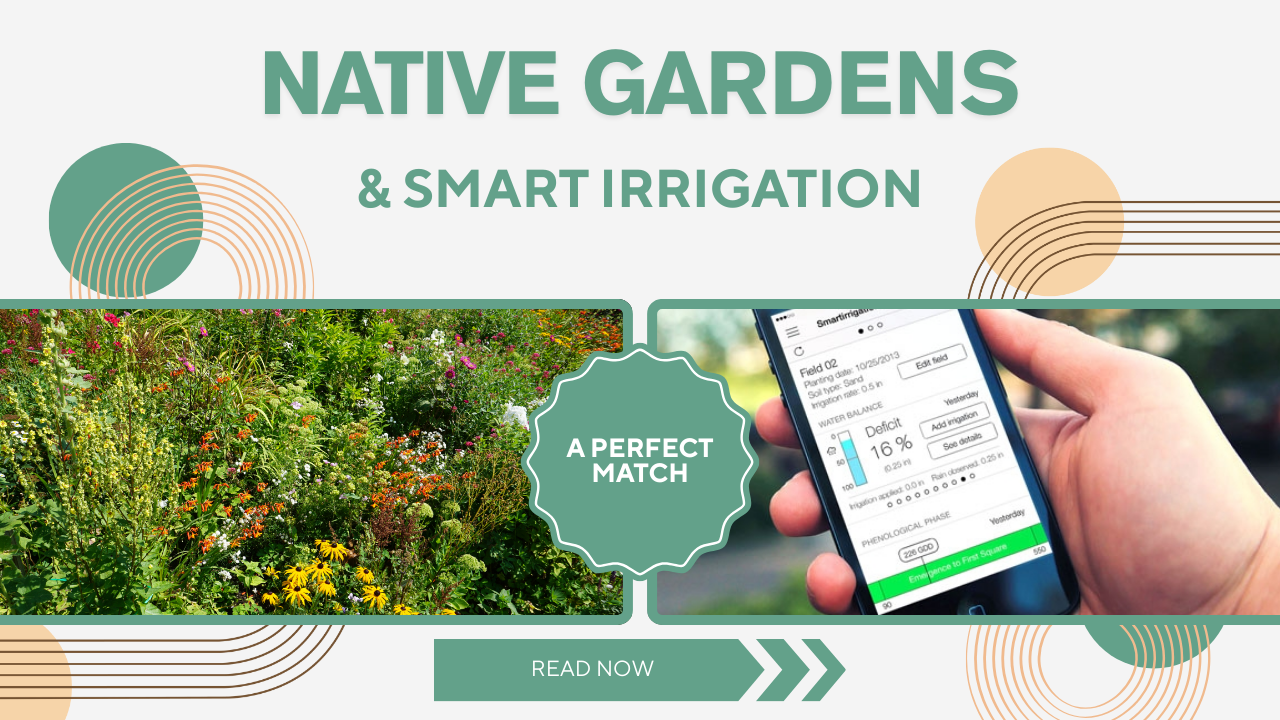Blog Post
-
Native Plant Gardens + Smart Irrigation: A Perfect Match
July 15, 2025

Introduction
In today’s eco-conscious world, native plant gardens are gaining popularity not just for their beauty but for their contribution to biodiversity and sustainability. When these landscapes are paired with smart irrigation systems, they become both environmentally friendly and efficient—reducing water use while supporting pollinators and local ecosystems.
Using tools like landscape irrigation design software, lawn irrigation design tools, and landscaping software, professionals can strategically plan native gardens with precision watering in mind. Together, these technologies and natural practices are redefining modern landscape design.
1. The Power of Native Plants in Modern Landscapes
Native plants are naturally adapted to their local environment. They thrive without excessive fertilizers or water and support native pollinators like bees, butterflies, and hummingbirds. Benefits include:
- Reduced irrigation needs
- Fewer pest and disease issues
- Increased habitat for wildlife
With landscape design software, contractors can create naturalistic layouts that integrate native species seamlessly, enhancing both aesthetics and functionality.
2. Designing Pollinator-Friendly Gardens
Pollinator gardens aren’t just beautiful—they’re essential to ecosystem health. Thoughtful design considers:
- Bloom sequences for continuous nectar
- Diversity in plant species and heights
- Limited pesticide use
By integrating landscape irrigation design software, designers can ensure these areas receive gentle, efficient watering without disrupting sensitive habitats. Lawn irrigation design tools help apply drip systems or low-flow emitters that keep plants hydrated without flooding flower heads.
3. Smart Irrigation: Watering Wisely
Smart irrigation systems use weather data, soil moisture sensors, and zoning to deliver just the right amount of water. They:
- Reduce runoff and evaporation
- Lower water bills
- Comply with water conservation regulations
When paired with irrigation design software, these systems can be tailored precisely to the layout of a native garden, maximizing plant health and minimizing waste.
4. Planning with Precision: Tools That Make It Possible
Using landscape irrigation design software and landscaping software, professionals can:
- Map zones for different water requirements
- Visualize sun exposure and drainage
- Integrate smart controllers into overall designs
These digital tools enable you to "design with nature" instead of against it. For example, plants that thrive in moist conditions can be grouped and assigned to specific irrigation zones, while drought-tolerant species are watered sparingly.
5. Lawn Alternatives and the Role of Site Planning
Many native gardens incorporate lawn alternatives such as:
- Clover or buffalo grass
- Ornamental grasses and ground covers
- Mulched or stone walkways
With site plan software, contractors can create detailed visualizations of these features, ensuring accurate placement and efficient use of resources. Lawn irrigation design tools further ensure every inch is accounted for and supported properly.
6. Environmental Impact and Long-Term Savings
Combining native plant gardens with smart irrigation results in:
- Reduced energy and water use
- Decreased maintenance costs
- Greater property value and curb appeal
These systems often qualify for rebates and incentives, especially when built using irrigation design software to meet regulatory standards.
Conclusion
The combination of native plant gardens and smart irrigation systems represents a forward-thinking, sustainable approach to landscape design. By using powerful tools like landscape irrigation design software, lawn irrigation design tools, and landscaping software, professionals can plan, execute, and maintain landscapes that are both eco-friendly and efficient.
As more homeowners and contractors embrace biodiversity and water conservation, this pairing isn’t just smart—it’s essential to the future of sustainable landscaping.